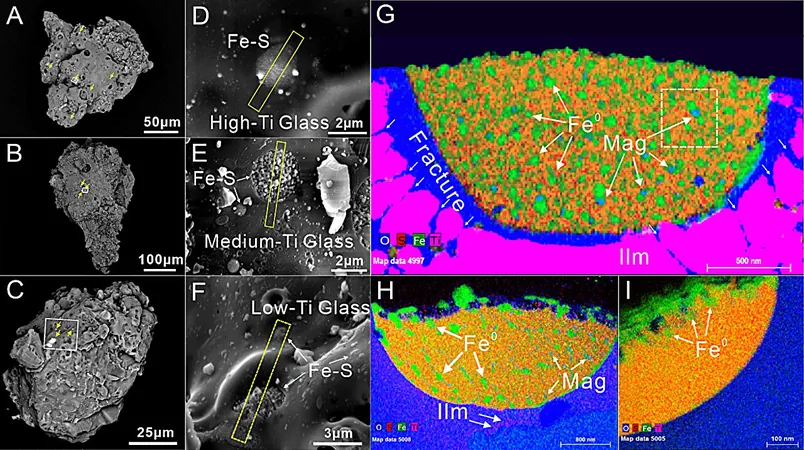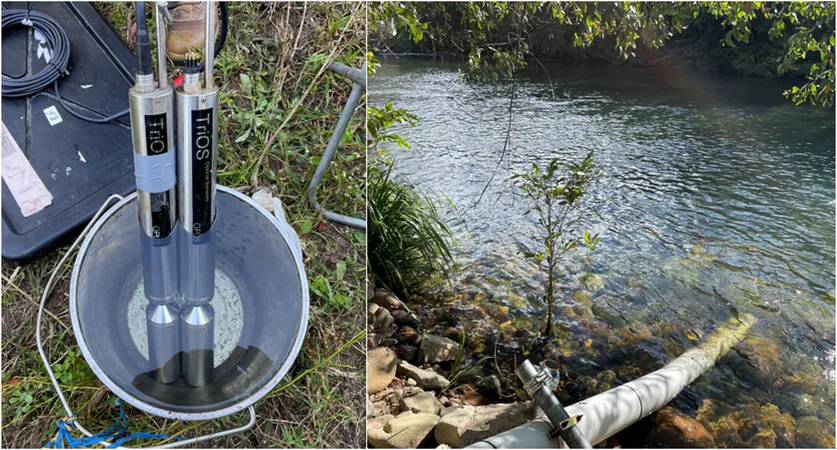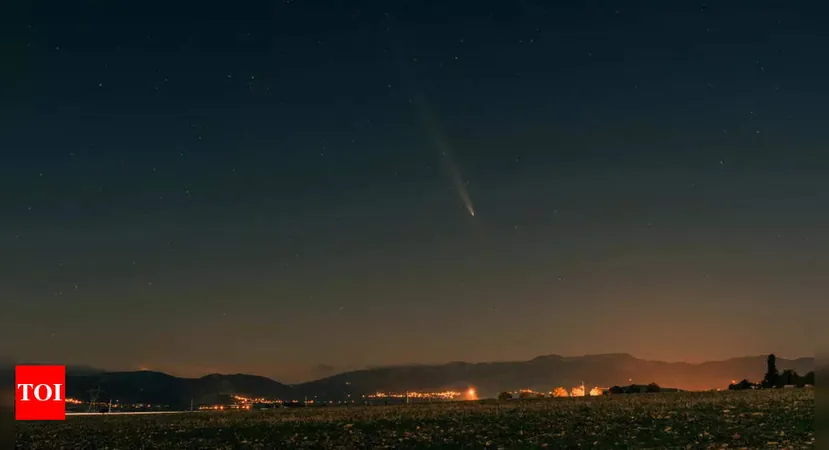
Groundbreaking Discovery Reveals Ubiquitous Submicroscopic Magnetite in Lunar Soil!
2024-09-25
Author: Liam
Introduction
A pioneering research team led by Li Yang and Cao Zhi from the Institute of Geochemistry, Chinese Academy of Sciences, has made a stunning revelation: submicroscopic magnetite particles are widespread across the lunar surface, especially in high-titanium regions. This groundbreaking finding reshapes our understanding of the Moon’s microscale oxidation environment, offering fresh insights into lunar geology.
Research Methodology
In an intensive study, researchers carried out in-situ electron microanalysis on rounded, droplet-like iron-sulfide grains found within impact glasses from the remarkable Chang'e-5 lunar sample return mission. Their analysis confirmed not only the existence but also the commonality of these submicroscopic magnetite particles, linking their concentration directly to the titanium content in the area.
Significance of Magnetite
Magnetite, a vital oxidized mineral in planetary science, is closely associated with ancient magnetic fields and the potential markers of past life. Historically, lunar magnetite has been deemed rare due to the Moon's reduced surface conditions. However, this new evidence challenges that notion entirely.
Examining Previous Research
Although past studies employing Mössbauer spectroscopy and electron spin resonance (ESR) suggested the presence of magnetite-like phases in Apollo lunar soils, this research provides crucial mineralogical evidence supporting these earlier hypotheses.
Statistical Findings
Li and Cao's research indicated that a significant number of submicroscopic magnetite particles are embedded in the iron-sulfide grains, with a notable correlation to the titanium content in the surrounding glass. The microanalysis demonstrated that these magnetite particles formed as a direct consequence of impact events, highlighting the dynamic processes that shape the Moon’s surface.
Eutectoid Reaction Mechanism
Utilizing the eutectoid reaction mechanism (4FeO = Fe3O4 + Fe), the team explained how these magnetite particles came to be. Their statistical findings revealed that among approximately 200 glassy grains, seven droplet-like iron-sulfide grains displayed magnetite on their surfaces, suggesting a common yet probabilistic assemblage of sulfide and glass.
Conclusion
As Li Yang eloquently put it, “The presence of submicroscopic magnetite in these iron-sulfide grains acts as in-situ geological evidence for the magnetite-like phases identified during Apollo missions. This forms a robust foundation for concluding that impact-induced submicroscopic magnetite is likely widespread in the high-titanium regions of lunar regolith.”
Publication and Future Research
Published in the esteemed journal *Science Advances* on September 20th, this study not only adds depth to our understanding of lunar geology but also bolsters theories regarding the impact-induced mechanisms that create lunar surface magnetic anomalies previously documented in scientific literature.
Implications for Future Exploration
As we delve deeper into the mysteries of the Moon, this findings sets the stage for future explorations that could unlock even more secrets about our nearest celestial neighbor. Who knows what other discoveries await us on the lunar surface?









 Brasil (PT)
Brasil (PT)
 Canada (EN)
Canada (EN)
 Chile (ES)
Chile (ES)
 España (ES)
España (ES)
 France (FR)
France (FR)
 Hong Kong (EN)
Hong Kong (EN)
 Italia (IT)
Italia (IT)
 日本 (JA)
日本 (JA)
 Magyarország (HU)
Magyarország (HU)
 Norge (NO)
Norge (NO)
 Polska (PL)
Polska (PL)
 Schweiz (DE)
Schweiz (DE)
 Singapore (EN)
Singapore (EN)
 Sverige (SV)
Sverige (SV)
 Suomi (FI)
Suomi (FI)
 Türkiye (TR)
Türkiye (TR)